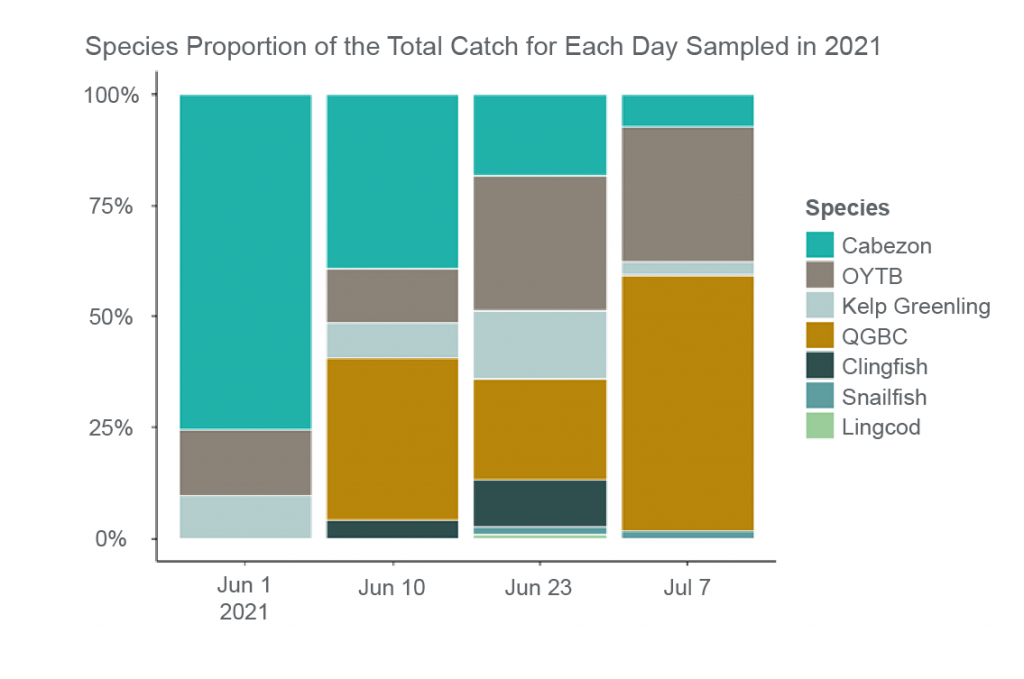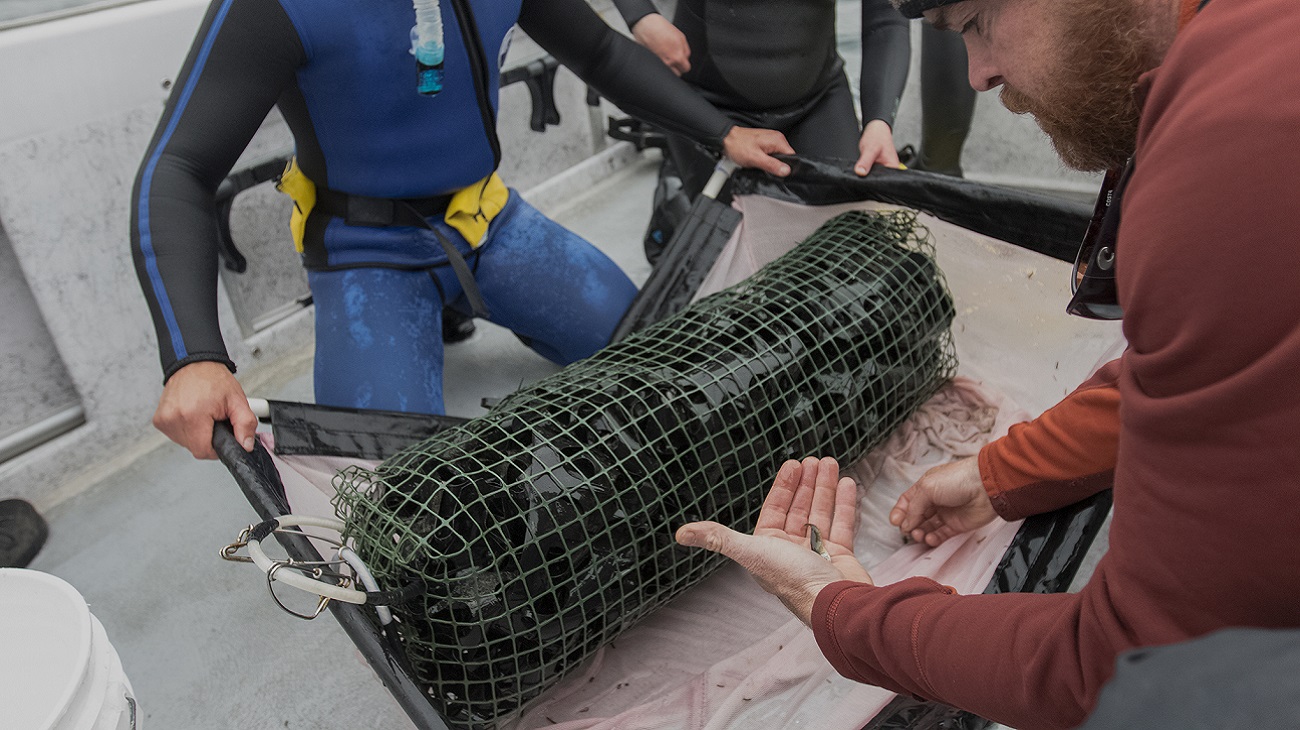By Guest Contributor and Research Collaborator Megan Wilson
(PhD Student, Oregon State University)
WHAT IS THE SMURF PROJECT?
ODFW Marine Reserves Program and OSU researchers worked in collaboration to develop the Standard Monitoring Units for the Recruitment of Fishes (SMURF) project with the goal of determining the value of marine reserve habitats for protecting fishes during their early life stages. SMURFs are designed to sample fish that are starting to settle, that is when larval fish begin to associate with structural or physical habitat. Specifically, the project aims to 1) quantify the abundance and 2) identify the community composition of settling temperate reef fishes.
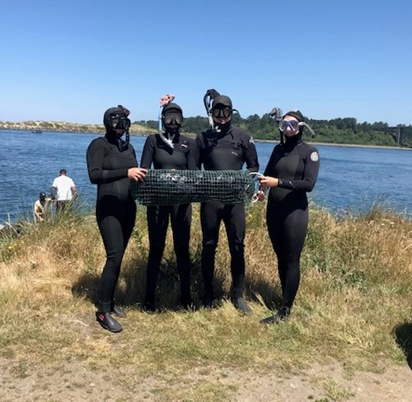
The SMURF project was established in 2011 and has occurred every year thereafter except 2020, due to health and safety concerns related to COVID-19.
The map below shows our sampling locations, including Otter Rock Marine Reserve and Cape Foulweather Comparison Area in panel A, where sampling began in 2011, and Redfish Rocks Marine Reserve and Humbug Mountain Comparison Area in panel B, where sampling began in 2014. Red dots indicate replicate SMURF moorings. We deploy SMURF moorings for the duration of the settlement season (approximately April – September) and collect samples on a bi-weekly basis.
Due to budgetary and staffing limitations, we are focusing our sampling on Otter Rock and Cape Foulweather in 2021.
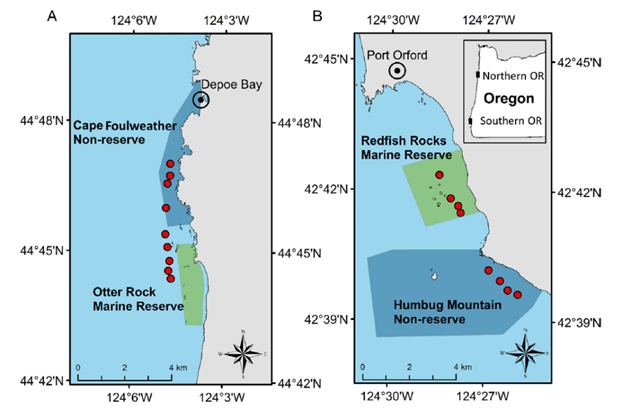
WHY MONITOR JUVENILE FISH SETTLEMENT?
Settlement rates of juvenile fishes are known to be highly variable seasonally, among years, and by species. Long-term settlement data sets are valuable to document natural variation in population replenishment as well as short- to long-term effects of oceanography and fishing pressure, especially for socio-economically important fisheries species where forecasting population abundance is crucial for sustainable management of their stocks.
Our SMURF long term data documents variability in settlement among species over time, as illustrated in the line figure below. The figure shows settlement rate rising and falling over time (2012-2019) for the five most common species or species complexes caught in the SMURFs at Otter Rock and Cape Foulweather. Olive, Yellowtail, and Black Rockfish are grouped in the OYTB species complex, Quillback, Gopher, Black and Yellow, and Copper Rockfish are grouped in the QGBC species complex, and Splitnose and Redbanded Rockfish are grouped in the SR species complex. These species are grouped in multi-species complexes because they require genetic analysis to be identified to the species level.
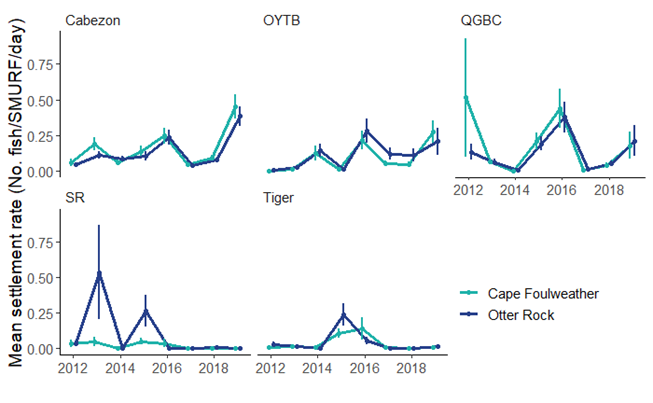
UPDATES FROM THE FIELD: A SNEAK PEEK INTO 2021 SMURF DATA
We are currently in the middle of our 2021 sampling season. In just four sampling events, we’ve collected, identified, and measured 788 fishes from 7 different species or species complexes. The species we have observed so far this year include Cabezon (Scorpaenichthys marmoratus), Clingfish (Gobisox meandricus), Kelp Greenling (Hexagrammos decagrammus), Lingcod (Ophiodon elongatus), Snailfish (Liparus mucosus), and OYTB and QGBC rockfishes.
First Time Seeing Juvenile Lingcod Interestingly, 2021 is the first year that the SMURF team has ever observed lingcod in the SMURFs. SMURFs aggregate settlement stage fishes by mimicking kelp-like settlement habitat and lingcod are thought to prefer sandy bottom settlement habitat rather than kelp, making their occurrence in the SMURFs quite surprising. Additionally, during our sampling event on 7/7/21, we caught a grand total of 478 fishes at our Otter Rock and Cape Foulweather sites – a record number of fishes for these two sites!
Sneak Peek Into 2021 Data Below is a sneak peek into our 2021 SMURF data. The stacked bar chart shows the species or species complex composition of our catch so far this year at four different sampling events (indicated by date on the x-axis). We can’t wait to see what we’ll catch throughout the rest of the 2021 SMURF season!
